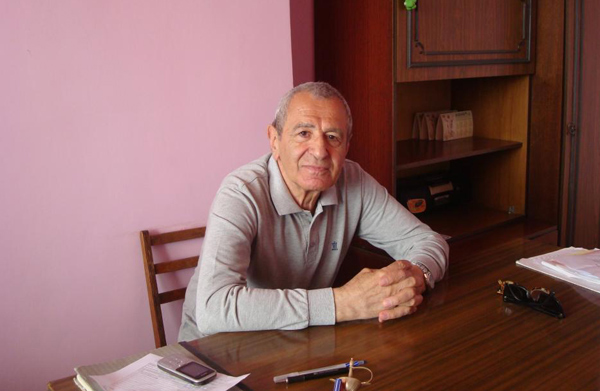Why are they building the third line if it is not going to be used until 2027?
The Iran-Armenia third transmission line (400 kW), which the Minister of Energy and Natural Resources, Yervand Zakharyan, announced at the government session on August 13, will not be used in the coming years, moreover the maintenance and operation of this line will be a heavy burden on our energy system. This is what the energy expert Emil Sahakyan thinks. The expert is puzzled why a third line is built in the event when our country is connected with Iran with two 220 kilovolt voltage lines, whose cumulative bilateral capacity, according to the expert, is at least not less than 300 megawatts.
Mr. Sahakyan, in response to the question of “Aravot” of whether there is a need for the third electricity line and for what purpose it is being built, said that he is also puzzled about the need to build the line and “it would be right that prior to making a statement the honorable minister would explain the purpose of building the transmission line to the population.” Note that the government substantiates the building of the third 400 kV transmission line, which costs 160 million dollars, with the necessity to raise the reliability of parallel operations of the two countries’ energy systems and the level of Armenia’s energy security. In addition, the government ensures that building this line will enable to reach the electricity exchange capacity between Iran’s and Armenia’s energy systems from 350 MW to 1,000 MW, as well as will increase the reliability of southern and central sectors’ connection of Armenia’s energy system.
According to Emil Sahakyan, the two power lines that are already built represent a significant amount, which, however, have not almost been used to their full capacity. “In the current situation, these two lines provide the connection of the two countries energy systems pretty reliable and allow quite successfully implement a parallel work.” The expert believes that the construction of the third 400 kW line with a capacity of about 1,000 megawatts does not meet nowadays requirements of Armenia’s energy system, because in the coming years, at least until the year 2027, this energy line is impossible to use with the involvement of Armenia’s powers.
Given this circumstance, Emil Sahakyan addresses a question to our country’s energy field responsible entities, “What is the reason for spending this 160 million dollars, part of which will be provided by the Armenian side? After the exploitation of this line, it will require maintenance and operating costs and being unnecessary, it will be an additional burden for our energy system. Unfortunately, when announcing the decision on the construction, the honorable minister failed to provide any explanation about the reasons for building this line, hence, a natural curiosity arises. To dispel the doubts, I think it would be right for the appropriate personnel of the ministry present the public the grounds, based on which this 400-kilowatt electric line should be built.” Using some sources, Emil Sahakyan had the impression that the construction of the third 400 kW line is a regional integration event. In other words, the line is built to be integrated to the neighboring countries’ energy systems, which in the future will lead to the creation of the unified power system.
To our question about what negative consequences the unified system can have on our country’s energy system, Emil Sahakyan said, “When a unified system is created, the mere domestic problems of the given country are moved to the second plan, at the responsible moments, given country is deprived of the opportunity to work separately.” The expert mentioned also about the risk of losing the energy independence. According to our interlocutor, “The issue of integration may be raised when an energy system is established and build, which is capable of working alone, in separate and reliably work for the benefit of its population. Only after then, the issue of the integration can be raised. The partnership with the neighboring countries is not excluded during the emergency cases, which, however, cannot be called an integration”.
Emil Sahakyan has carefully studied the development program of Armenia’s energy system at minimum cost, and even in the event of implementation of these projects, the deadlines of which are not so likely for the expert, Armenia may need this 400 kW capacity transmission line at best not sooner than in 2027-2028, yet, our country should spend money for the maintenance and operation of the line before it. Note that a number of territories in Kotayk, Gegharkunik, Vayots Dzor, and Syunik marzes are recognized as an exceptional public priority interest for building the new Iran-Armenia high-voltage transmission line.
Lusine BUDAGHYAN,
“Aravot” daily
























































